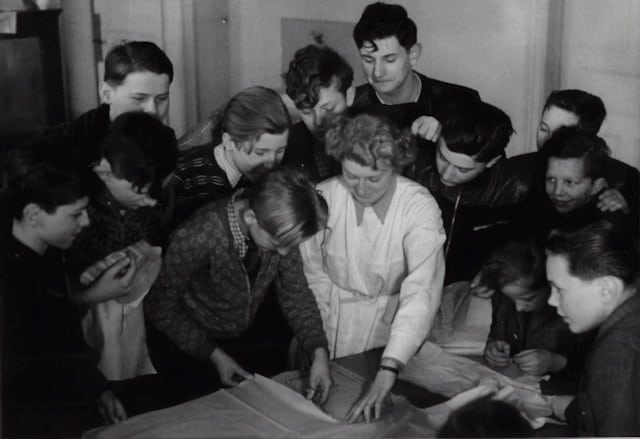How Do Interactive Virtual Museums Enhance Historical Education?

When we talk about museums, we often imagine large, echoing halls filled with priceless art and artifacts. The thought of visiting such a place may evoke feelings of awe, curiosity, and the excitement of learning something new. But with the advancements in technology, museums have begun to break free from traditional brick-and-mortar confines. Now, anyone with an internet connection can take a virtual tour of some of the world’s most renowned institutions. This transformation has significant implications for historical education, allowing scholars and students alike to engage with cultural heritage in novel and interactive ways. This article explores the rise and impact of interactive virtual museums on historical learning.
The Emergence of Interactive Virtual Museums
As the digital revolution continues to reshape our lives, museums have not been left behind. The concept of a virtual museum is not entirely new. However, the level of interaction and immersion that current technology allows is unprecedented. With the advent of virtual reality (VR) and augmented reality (AR) technologies, virtual museums have moved beyond simple online galleries to become immersive, interactive experiences.
In the same genre : 7 trendy ideas for wearing your silver bracelets in style
Virtual museums use cutting-edge technology to replicate a physical museum online. They offer a 3D representation of the museum layout, allowing visitors to explore the museum as if they were physically there. Some virtual museums even incorporate augmented reality, enabling visitors to interact with the exhibits, enhancing their learning experience.
The Role of Google in Promoting Virtual Museums
Google has been instrumental in the development and promotion of virtual museums. Through its Cultural Institute, Google has partnered with museums across the globe to digitize their collections and make them accessible online.
Also read : Can AI Personalize Learning for Students with Special Educational Needs?
The Google Art Project is a perfect example of this endeavor. It allows users to explore and interact with thousands of artworks from museums around the world in high resolution. It even lets visitors create their own collections, combining works from different museums, a feature that has been particularly useful for educators and students.
Google’s Expeditions program is another notable initiative. It uses augmented reality for educational purposes, allowing teachers to guide their students on virtual tours of museums, historical sites, and even inaccessible places like space or underwater locations. These initiatives by Google have played a significant role in democratizing access to cultural content and enhancing the learning experience.
The Benefits of Interactive Virtual Museums for Historical Education
Interactive virtual museums bring a wealth of benefits for historical education. They allow visitors to explore collections at their own pace and in their own time, providing a flexible learning environment. Virtual museums also break down geographical barriers, giving people everywhere access to otherwise unreachable cultural heritage.
One of the significant advantages is the ability to interact with the exhibits. This interaction can range from clicking on an object to reveal additional information to manipulating a 3D model to view it from different angles. This level of interaction deepens the learning experience, making it more engaging and memorable.
Furthermore, virtual museums can offer content that physical museums cannot. For example, they can provide historical context through multimedia presentations, timelines, and interactive maps. They can also use technology to bring history to life, such as by reconstructing ancient buildings or simulating historical events.
The Challenges and Future of Interactive Virtual Museums
Despite the numerous benefits, virtual museums also face several challenges. Firstly, creating a virtual museum is a technically complex and costly process. It requires high-quality digitization of the exhibits, 3D modeling, and programming, not to mention the ongoing maintenance of the digital platform.
Secondly, while virtual museums can replicate many aspects of a physical visit, they cannot fully replace the sensory experience of being in a real museum. The smell of old books, the feel of a centuries-old artifact, or the ambiance of a historic building – these are elements that virtual reality cannot yet replicate.
However, the future of interactive virtual museums looks promising. With the continuous advancement in technology, we can expect virtual museums to become even more immersive and interactive. For instance, haptic feedback technology, which provides tactile sensations, could further enhance the sensory experience. Also, as VR and AR technologies become more mainstream, we can expect more museums to adopt these technologies to enrich their virtual offerings.
In conclusion, interactive virtual museums represent a significant innovation in historical education. By offering an engaging and accessible learning environment, they have the potential to transform how we interact with and understand our cultural heritage. Despite the challenges, with the continuous advancements in technology, it is safe to say that the future of historical education lies in the exciting intersection of culture and technology.
The Impact of Interactive Virtual Museums on the Learning Process
Interactive virtual museums are revolutionizing educational processes by offering a unique blend of culture, history, and technology. The conventional learning process in a physical museum is linear and static. But virtual museums are dynamic and interactive, thus creating more robust learning experiences.
Engagement is a crucial factor in the learning process. Virtual museums boost engagement by allowing users to interact with exhibits, offering personalized tours, and providing multiple information sources. For example, clicking on an object can reveal additional information, audio commentary, or video clips. Students can also manipulate 3D models, test their knowledge with quizzes, or participate in virtual workshops.
Virtual museums also support collaborative learning. With tools like Google Scholar and Scholar Crossref, students can share their findings, discuss ideas, and work on projects together. Collaborative learning fosters critical thinking and problem-solving skills while enhancing the learning experience.
The use of augmented reality and virtual reality in virtual museums caters to different learning styles. Visual learners can benefit from high-resolution images and 3D models, while auditory learners can benefit from audio guides and video presentations. Moreover, VR technology can provide immersive experiences, such as walking through a reconstructed ancient city, which can make learning more enjoyable and memorable.
Finally, virtual museums promote lifelong learning. Unlike physical museums, virtual museums are open 24/7, allowing users to learn at their own pace and revisit the museum whenever they want. The flexibility and accessibility of virtual museums can instill a love of learning and curiosity about our cultural heritage.
Concluding Thoughts: The Green Version of Museums
In the digital age where technology is rapidly evolving, the concept of a museum is also transforming. Interactive virtual museums represent a green version of museums that is not bound by physical limitations. They transcend geographical boundaries, democratize access to cultural heritage, and reshape the learning experience.
Virtual museums are a testament to the power of technology in enhancing historical education. They make cultural heritage more accessible, interactive, and engaging, thus fostering a deeper understanding and appreciation of our history. Moreover, they exemplify the potential of the crossref green principle in taking a sustainable approach to preserving and sharing culture.
Despite the challenges, such as the high cost and technical complexity of creating virtual museums, the future looks promising. With the continuous advancements in AR, VR technology, and learning agents, the sensory experience of visiting a museum will be significantly improved.
Moreover, the museum application of technology is not just limited to virtual tours. Future developments could include AI-powered learning agents that personalize the learning process, or gamified experiences that make learning fun and exciting.
In conclusion, interactive virtual museums are transforming historical education. They are opening up new possibilities for engagement, collaboration, and lifelong learning. As we move forward, it is clear that the future of museums – and of learning itself – lies at the exciting intersection of culture and technology. Technology like Google’s initiatives in the field is setting the pace for this transformation. As we continue to explore and innovate, we will undoubtedly discover even more ways that technology can enrich our understanding and appreciation of our shared cultural heritage.
